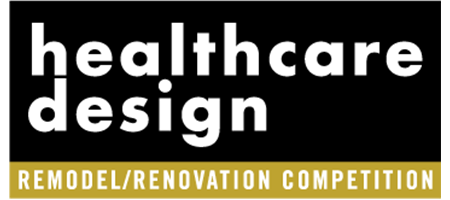Innovation is not always a structured process. Creativity and collaboration thrive in the spontaneity of informal conversations, chance encounters, and the exploration of nature.
As academic medical centers continue to push the boundaries of medical knowledge in laboratories and lecture halls, planners and designers should embrace the potential for discovery in unexpected places.
Public and private spaces should contain synapses—intersecting points that can create intentional opportunities for meaningful conversations. These are places people want to go during their normal routines to grab coffee, eat lunch, take a break outside, or walk along a familiar track.
Here are four ideas for spaces that can help foster opportunities for discourse and discovery within healthcare facilities:
- Staff corridors
A staff corridor may seem like an unlikely setting for inspiration, but intentionally designed touchpoints that stimulate conversations among colleagues can help to plant the seeds of innovative ideas.
At the University of Texas Southwestern Cancer Care outpatient building of the Harold C. Simmons Comprehensive Cancer Center and the Peter O’Donnell Jr. Brain Institute in Dallas, creating opportunities for meaningful intersections was a deliberate element of the design.
The outpatient cancer care and the brain research buildings are connected on Level 3 by a wide staff corridor that includes comfortable bench seating, as well as pre-function seating to support longer conversations and visits beyond simply walking in or out together.
Connecting and running parallel to the parking garage, this corridor serves as a “superhighway,” where staff meet on their way to their respective offices and departments. The strategic location of this long walkway supports opportunities for clinical and research staff to have “catch-up conversations” as they make their way to their particular destinations, supporting opportunities for a convergence of ideas.
- Cafes and coffee shops
In the heart of every academic medical center, cafeterias and coffee shops serve as casual gathering spots for clinicians, researchers, and students alike.
These spaces, designed for relaxation as well as sustenance, also host impromptu updates on collegial findings and clinical problems as well as brainstorming of research ideas and applications. A welcoming atmosphere combined with sound absorbent materials to support conversation encourages interdisciplinary collaboration, enabling professionals from different departments to mingle and share perspectives.
For example, the UT facility houses a popular cafe on the third floor of the cancer care outpatient building and a coffee shop on Level 3 of the brain institute. These two spaces are convenient locations to support breaks and casual conversations among physicians, clinical care staff, principal investigators, and research teams.
- Nature access
Academic medical centers are often nestled in university campuses with access to natural landscapes, providing an opportunity to connect staff to the outdoors as well. Walking trails offer more than just a scenic escape; they serve as a dynamic outside classroom for reflection and ideation.
The physical activity of hiking or walking at a quick pace—heart pumping, blood flowing, and breathing deeply—can stimulate mental acuity, inspiring innovative solutions to complex medical problems. The informal setting of a trail also promotes open dialogue, fostering collaboration among professionals who might not otherwise engage.
Bringing the “outside in” through patio greenery, rooftop gardens, scenic views, and natural light can also have a big impact on collaboration, destressing, and social support. For example, Page worked with the Children’s Hospital of New Orleans in Louisiana to renovate spaces that the hospital’s director of projects called “outdated, dark, and unwelcoming.”
The project team incorporated large windows to bring in plenty of natural light to make the facility feel open and inviting. Hospital staff can be found sitting outside or in the sunlit concourse during lunch breaks, chatting and collaborating in a much more pleasing environment.
- Hallway whiteboards
The stark, utilitarian vibe of a hallway is transformed when designers take advantage of the walls by hanging whiteboards for open use. These surfaces become dynamic spaces for illustrating complex concepts, provoking group discussions, and engaging passersby in problem-solving.
Here, researchers can sketch out ideas, equations, or diagrams, creating a visual language that transcends the barriers of discipline-specific jargon.
For example, the new Shared Resources Hub at Emory University’s Winship Cancer Institute in Atlanta, prioritizes collaboration by providing access to advanced technologies, services, and expertise to support investigators from multiple disciplines. Design features of the hub include hybrid meeting technology, large windows, a welcoming breakroom, and whiteboards outside offices in corner nooks with comfortable seating.
Prioritizing team spaces
Unconventional spaces and places for discovery and collaboration may seem to emerge spontaneously, but they are often the result of thoughtful design and facility planning.
By recognizing and fostering these informal spaces, academic medical centers can further enhance their role as incubators for groundbreaking advancements in medicine and healthcare, as well as creating a more collegial, engaging environment for all.
Mark Vaughan, FAIA, FACHA is healthcare planning director at Page (Dallas) and can be reached at [email protected].












